Ever puzzled over the nature of Ashwood? Is it a hardwood or a softwood? Dive in as we delve deep into the heart of this incredibly versatile wood. Let’s explore!

Ashwood is a popular choice when it comes to furniture, doors, cabinetry, flooring, and also as food containers.
It is an excellent wood for woodworking.
Decades ago, when I was making something big, strong, and expensive with Ash wood, I always wondered about the hardness of this awesome wood.
Now, with years of experience, Here’s what I know about, Is Ash a Hardwood?
Yes, ash wood is a hardwood. This classification is based on the tree it comes from, which is a broad-leafed dicot tree, not necessarily on its physical hardness or density. However, ash wood is indeed dense and durable, making it a popular choice for many applications.
But there’s a lot more you need to know about the hardness of Ash wood.

From this article, I’ll explore is Ash a hardwood and how hard it is by taking its characteristics and common applications. Plus, I’ll compare its hardness with other woods too.
Furthermore, I’ll answer some frequently asked questions as well.
So, let’s dive in!

First of all, let’s get a brief knowledge about ashwood.
What Is Ashwood?
Ashwood, a name that instantly conjures images of sturdiness, resilience, and versatility, is one of the most renowned types of wood used in numerous applications around the globe.
To truly understand the essence and the wide-ranging uses of this remarkable timber, let’s delve deeper and explore its unique characteristics.
A Glimpse into the History and Mythology of Ashwood
Before we understand Ashwood as a material, it’s interesting to explore the cultural and historical significance this tree holds.
The name ‘Ash’ is derived from the word ‘spear’, a possible reference to its spear-like leaves or its historical usage for crafting weapons.
The tree is deeply rooted in Norse mythology, often referred to as the ‘World Tree’ and is believed to have given birth to the first man.
Physical Attributes of Ashwood
Ashwood is distinctive for its light to medium brown heartwood and beige or light brown sapwood, which is often very wide.
The boundaries between heartwood and sapwood may not always be clearly visible, lending Ashwood a beautiful, uniform aesthetic.
Over time, its colors subtly darken due to exposure to UV light and oxygen, enhancing its natural charm.
It has a straight grain, giving it a sleek appearance, although unique patterns can occasionally emerge under specific growing conditions.
Density and Durability of Ashwood
Ashwood is one of the most durable options available for furniture making and other applications.
In the Janka hardness test, white ash, the variety commonly used in furniture, scores a solid 1320, placing it above red oak, walnut, and cherry, and only slightly below maple and white oak.
This impressive score is indicative of Ashwood’s excellent durability and resistance to wear and tear.
The Origin of Ashwood
There are between 40-60 types of ash trees, with many native to the United States.
The most commonly used variety in woodworking is the white ash tree (Fraxinus americana L.), found extensively across North America.
When grown in its natural environment, the ash tree can reach up to 100 feet tall, with a dense crown of branches and leaves at the uppermost portion of the trunk.
Whether it’s for a timeless piece of furniture or a bespoke hand tool, Ashwood brings its unique charm and superior quality to the table, leaving an indelible mark on our lives and homes.
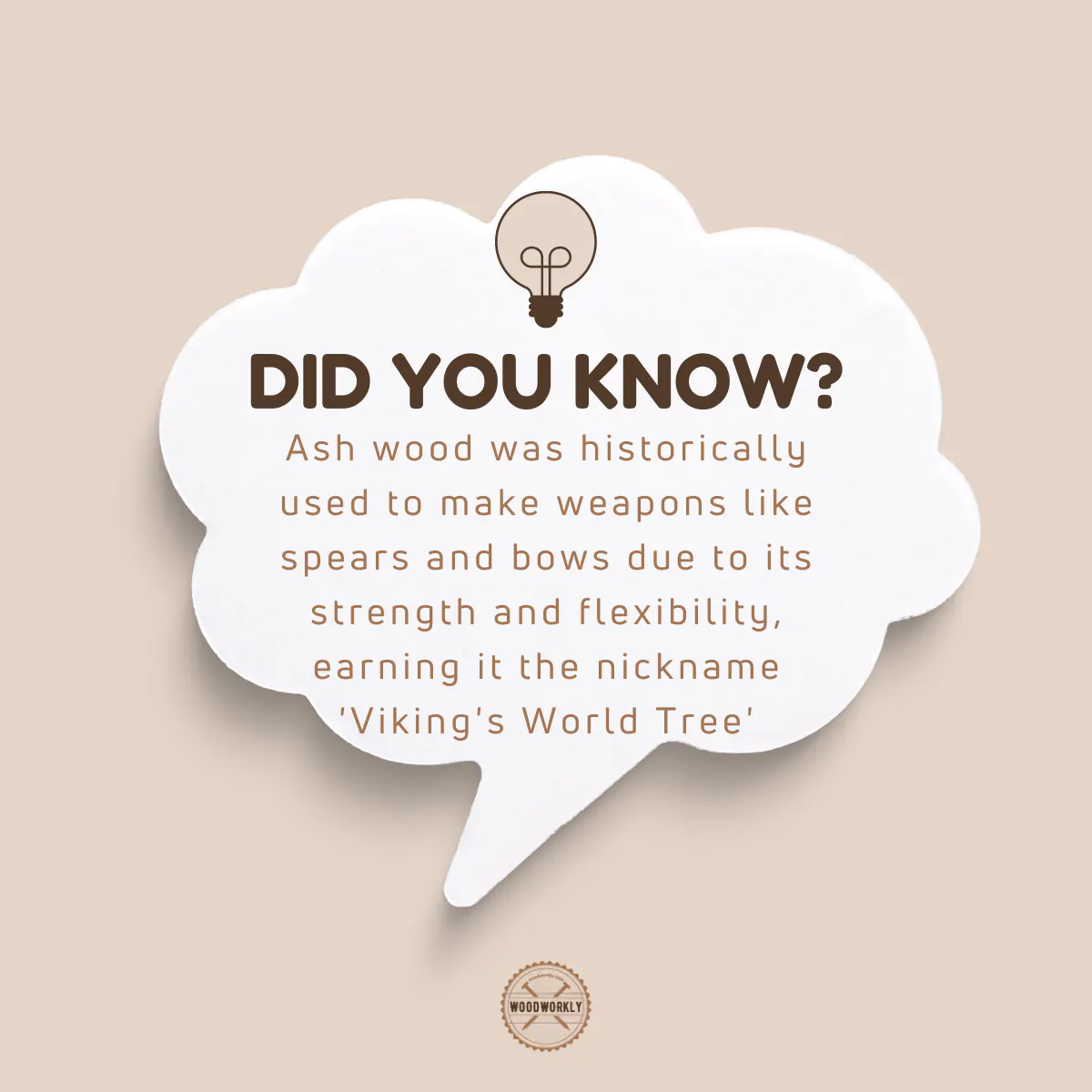
Now let’s talk about the hardness of ashwood in detail.
How Hard Is Ash Wood?
As wood is harder than any softwood and most of the hardwoods as well.
According to the Janka hardness test, the hardness value given for the Ash wood is 1,320 lbf (5,900 N) which is so much higher hardness rating than most other woods.
When we look at the structure of Ash wood, it is a ring-porous wood.
Because of being a hardwood with a large porous structure, the density of Ash wood is so much higher than most of the woods and that is also the reason to consider Ash wood as a hardwood.
The pores in the wood grain of Ash wood control the spread by allowing the Ash wood grain to become harder and denser.
So, let’s have a look at the hardness of Ash wood according to the Janka hardness values.
Tip: Janka hardness test is a measure of the hardness of a particular wood to resemble the resistance of wood to wear and dent.
It means if some wood has a high dent and wear resistance, that means it has a high hardness rating.
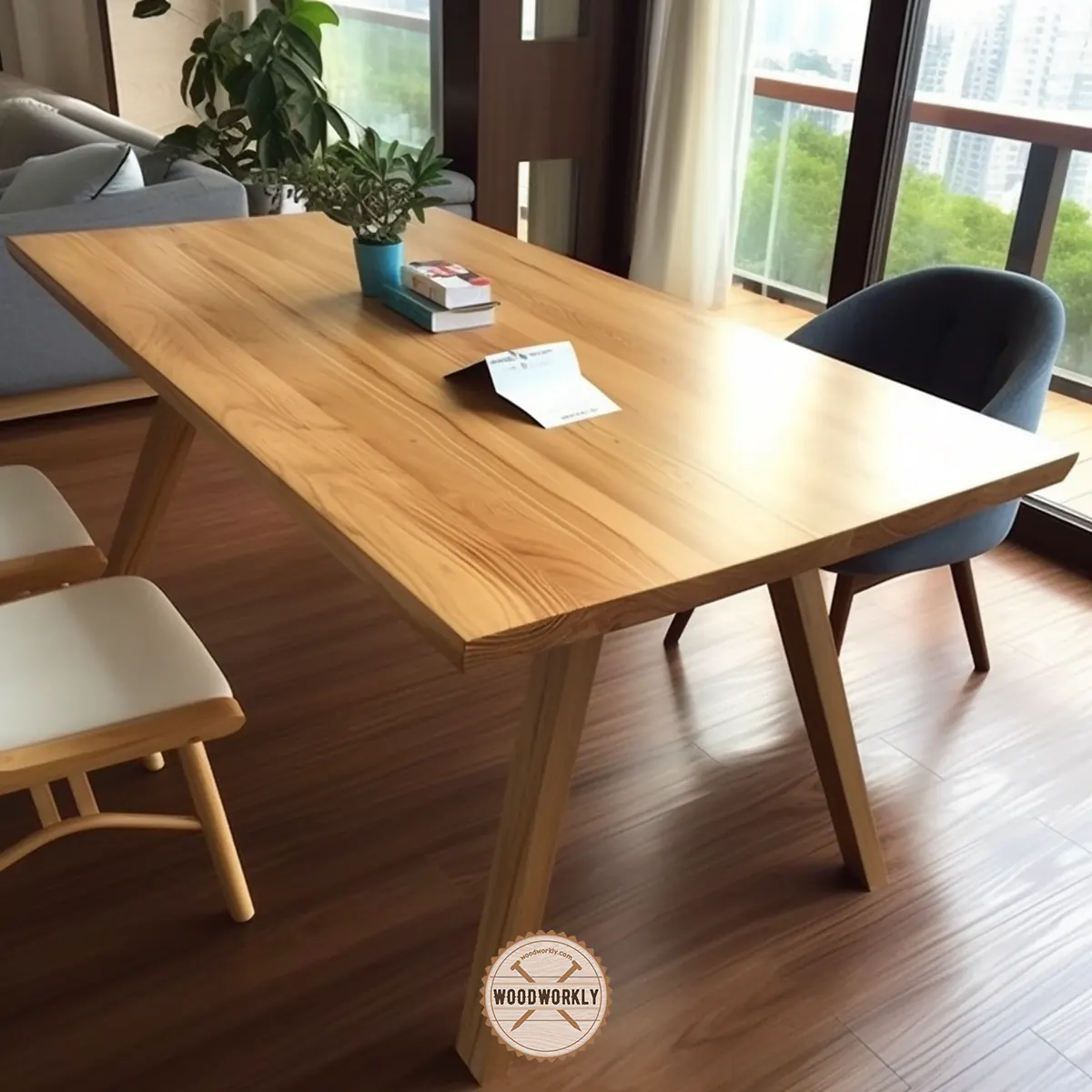
Ashwood Hardness Comparision
Ash wood has a hardness rating of 1,320 lbf (5,900 N).
Here is the hardness comparison of popular woods according to the Janks hardness test.
| Wood species | Hardness value |
| Brazilian Walnut | 3,684 lbf (16,390 N) |
| Red Mahogany, Turpentine | 2,697 lbf (12,000 N) |
| Brazilian Cherry, Jatoba | 2,350 lbf (10,500 N) |
| Golden Teak | 2,330 lbf (10,400 N) |
| Purpleheart | 1,860 lbf (8,300 N) |
| Hickory, Pecan, Satinwood | 1,820 lbf (8,100 N) |
| Rosewood | 1,780 lbf (7,900 N) |
| African Padauk | 1,725 lbf (7,670 N) |
| Wenge, Red Pine, Hornbeam | 1,630 lbf (7,300 N) |
| Hard Maple, Sugar Maple | 1,450 lbf (6,400 N) |
| Australian Cypress | 1,375 lbf (6,120 N) |
| White Oak | 1,360 lbf (6,000 N) |
| Ash (White) | 1,320 lbf (5,900 N) |
| American Beech | 1,300 lbf (5,800 N) |
| Red Oak (Northern) | 1,290 lbf (5,700 N) |
| Yellow Birch / Baltic birch | 1,260 lbf (5,600 N) |
| Heart pine | 1,225 lbf (5,450 N) |
| Teak | 1,155 lbf (5,140 N) |
| Black Walnut, North American Walnut | 1,010 lbf (4,500 N) |
| Cherry | 995 lbf (4,430 N) |
| Black Cherry, Imbuia | 950 lbf (4,200 N) |
| Red Maple | 950 lbf (4,200 N) |
| Silver Maple | 700 lbf (3,100 N) |
| Southern Yellow Pine (Loblolly and Shortleaf) | 690 lbf (3,100 N) |
| Douglas Fir | 660 lbf (2,900 N) |
As you can see Ash is a hardwood and its hardness is so much higher than most of the woods that we use commonly.

So, if you’re still worried about its hardness before starting your next woodworking project, let’s talk about Ash wood characteristics o get more familiar with Ash wood.
Ash Wood Characteristics
Ash wood is light beige to light brown hue color wood with straight grain hardwood with an attractive look. Because of being hardwood, the density of Ash wood is also high compared to other wood types.
Durability and the strength of Ash wood are also high, which is useful in furniture making.
Ashwood has a large porous structure that absorbs the paint and stain so well.
Because of being lightweight and having shock-resistant ability, Ash wood is popular in making baseball bats, and other sports equipment.
Did you know? Ash is one of the Best Wood for Axe Handle!
The qualities of Ash wood are,
- Lightweight
- Hardwood
- High durability
- High strength
- Shock resistant
- Stain well
- Aesthetically pleasing
The main characteristics of Ash wood can be displayed as follows,
| Color | Beige to light brown hue color |
| Density | 650 – 850 kg/m3 |
| Hardness | 1,320 lbf (5,900 N) |
| Stiffness | 1.74 Mpsi |
| Wood Type | North American Hardwood |
| Applications | Furniture, doors, cabinetry, flooring |
Let’s explore these Ashwood characteristics in more detail.
Color and Grain
One of the first things you notice about ash wood is its light color. It presents various shades of beige which subtly darken over time due to exposure to UV light and oxygen.
This characteristic is desirable for those seeking a natural or rustic aesthetic in their furniture or interiors.
Ash wood typically features a straight grain, which is one of its most attractive features. It gives a sleek and streamlined look to furniture and other wooden objects.
Occasionally, unique grain patterns may emerge due to environmental stress or pest infestation during the tree’s growth, giving the wood a unique and desirable ‘figured’ appearance.
Hardness and Durability
Ash is indeed a hardwood, but this doesn’t just refer to its durability or density; instead, it pertains to the tree species.
As a hardwood, ash comes from a dicot, or a broad-leafed tree.
When it comes to the actual hardness or resistance to indentation, ash wood scores impressively on the Janka hardness scale.
White ash, commonly used in furniture, has a Janka rating of 1320, making it one of the most durable wood options for furniture.
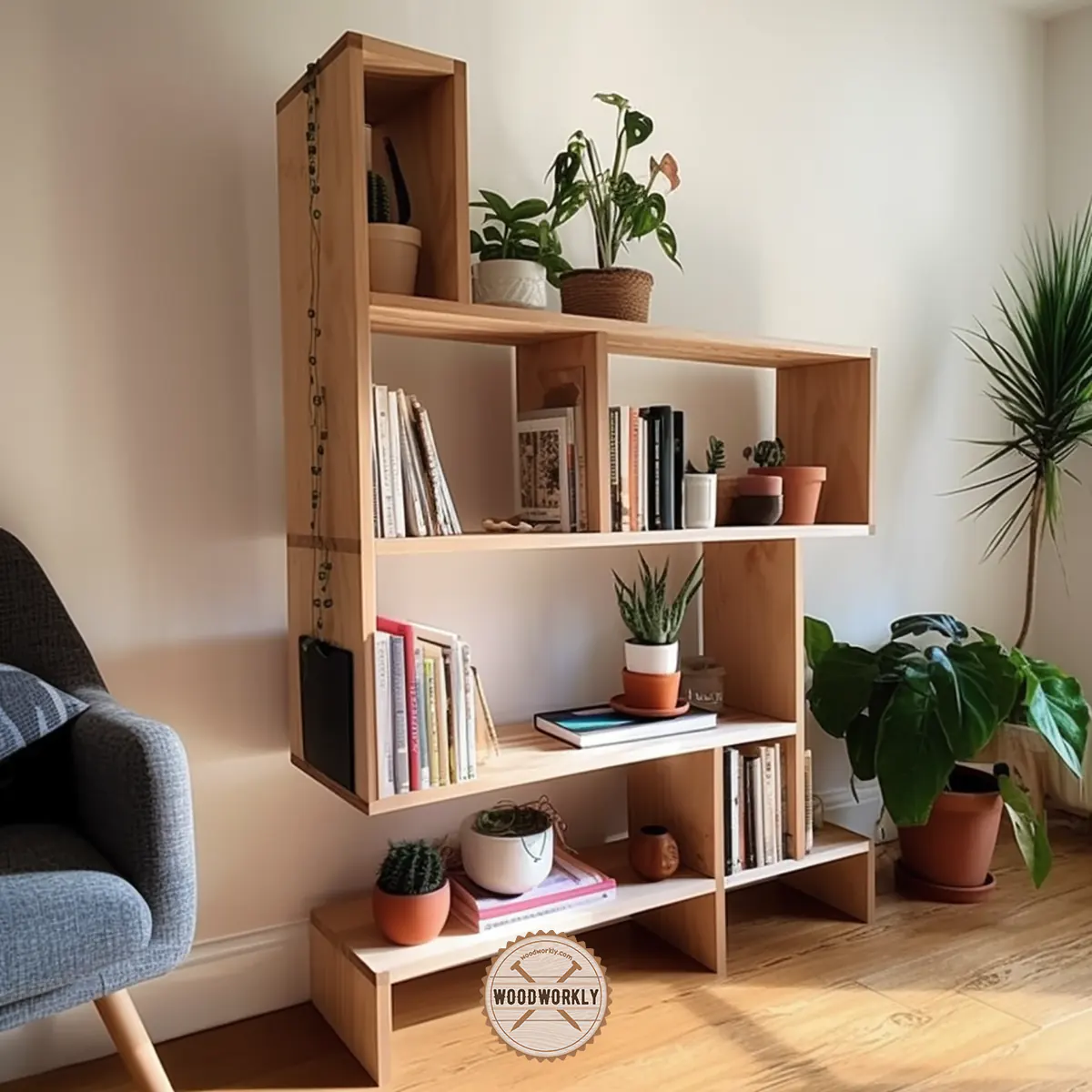
Workability
Due to its straight grain and medium density, ash wood is relatively easy to work with.
It’s great for sawing and nailing, and it also glues and stains well. This makes it a favorite among woodworkers and artisans for a variety of projects.
Versatility
The versatility of ash wood is one of its standout features.
You can find it being used in everything from furniture and flooring to tools, sports equipment, and even musical instruments.
Its strength and shock resistance make it particularly well-suited for demanding uses, such as tool handles and baseball bats.
Sustainability
While ash trees are native to the United States and were once plentiful, they’re currently facing the threat of the Emerald Ash Borer, a wood-boring pest.
Despite this, the ash wood used in manufacturing is often sustainably harvested to minimize environmental impact.
However, as the ash tree populations decline, finding furniture made with ash wood might become more difficult.
So, let’s have a look at the uses of Ash wood to get an idea about the versatility of Ash as a hardwood.
What is Ash Hardwood Used For?
Here’re the most common uses of ash wood,
- Cabinets
- Furniture
- Weapons
- Tools
- Sports equipment
- Doors
- Flooring and many more
Ash wood is hard, dense, and durable with incredible strength. These qualities make it perfect for any type of woodworking project.
Ash wood is a hardwood with unique elasticity. Therefore, Ashwood fits any space without fewer troubles.
Ash wood takes stain and paint well. Therefore, finishing is easy with Ash wood without getting a blotchy surface.
As a hardwood Ash wood is naturally resistant to scratches and dents. Therefore, we can easily use Ash wood for hard surfaces.
The water resistance and decay resistance and other great qualities of Ash wood are pretty much useful when making outdoor furniture.
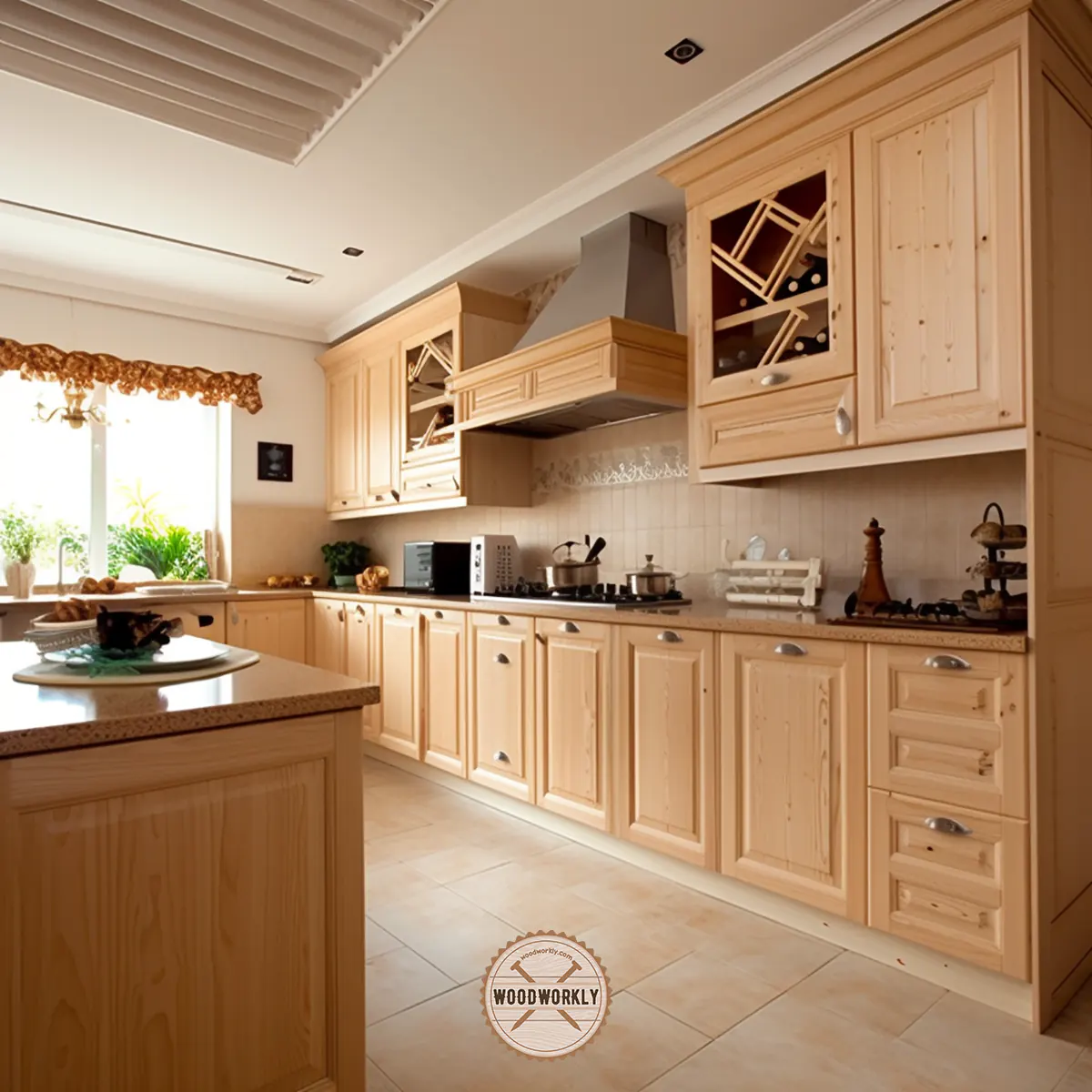
Pros and Cons Of Ash Wood
| Pros | Cons |
|---|---|
| Straight and attractive grain pattern | Not suitable for outdoor use due to less rot resistance |
| High durability (1320 on the Janka scale) | Tends to darken over time due to UV light and oxygen exposure |
| Light color that suits various interior designs | Can be difficult to distinguish from other woods like oak |
| Versatile for a wide range of uses | Declining availability due to Emerald Ash Borer infestation |
| Good workability (easy to cut, glue, and stain) | Requires regular maintenance and care |
| Sustainably harvested to minimize environmental impact | Can be more expensive than other hardwoods due to its durability and declining availability |
As you can see, Ash wood is one of the most versatile wood types on the planet.
Since we already know how hard ash wood is, Let’s have a quick look at its strength is also important to know when making projects.
How Strong Is Ash Wood?
Ash wood is considered one of the strongest wood types in the world.
Ash wood has a compressive strength of 7,410 psi and a bending strength of 15,000 psi which is so much higher than any hardwood we know.
This is why Ash wood has incredible strength with so much power to keep its dimensional stability against high stress.
Ash wood has good workability and dimensional stability which is so useful for furniture making.
Because of being a strong wood, Ash wood takes nailing, gluing, and screwing so well. Being lightweight while keeping its strength is another significant quality of Ash wood.
The excellent strength and flexibility of Ash wood make the wood strong, durable, and resistant to outdoor elements.
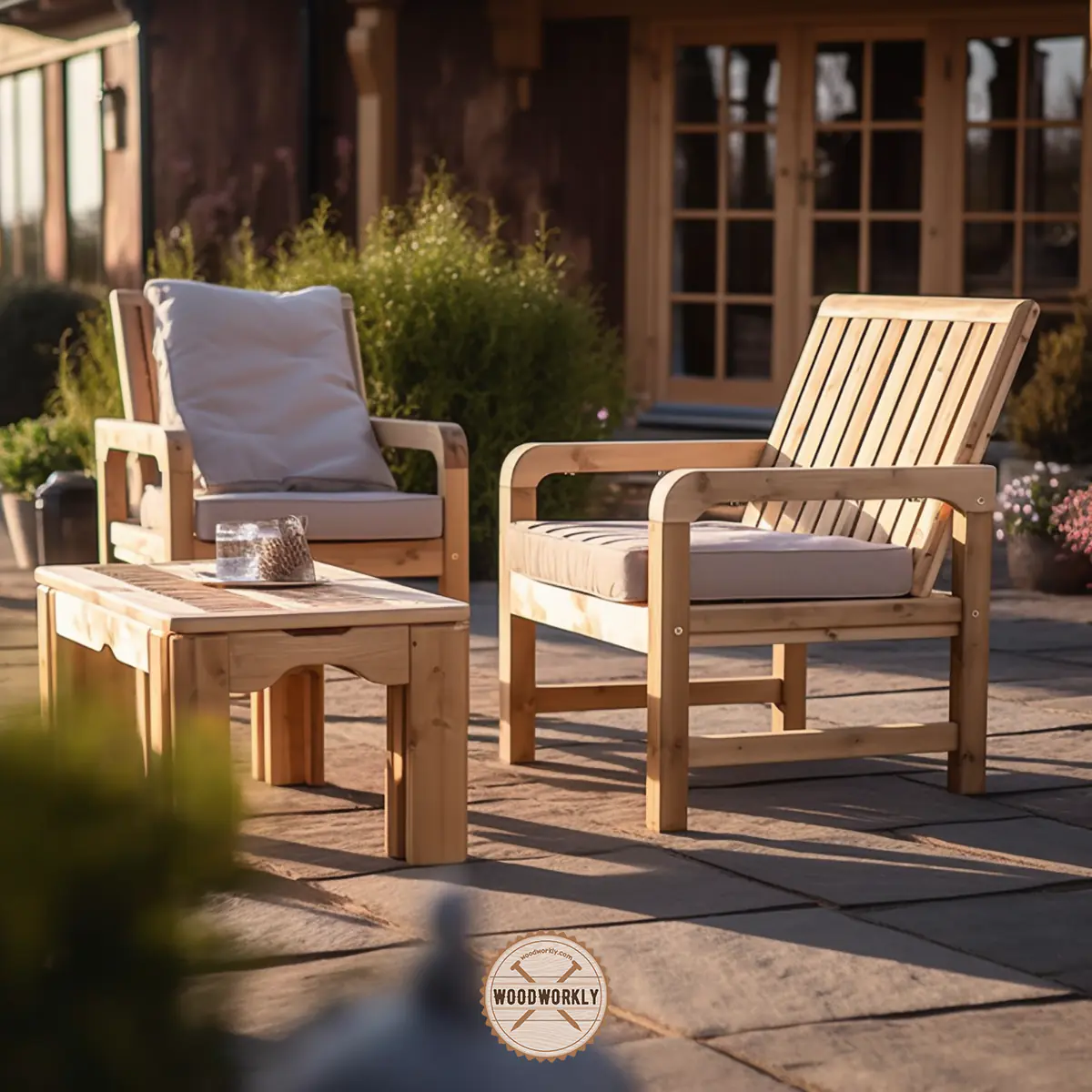
Is Ash Wood Durable?
If you’re seeking a wood species known for its longevity and resilience, then ash wood should certainly be a contender on your list.
With its high score on the Janka hardness scale, along with a myriad of other desirable characteristics, ash wood has proven itself to be a highly durable choice in numerous applications.
Ash Wood and the Janka Hardness Scale
When it comes to evaluating the durability of a type of wood, one of the most widely recognized tests is the Janka hardness test.
This method assesses the force required to embed a small steel ball halfway into a block of wood.
In the case of white ash, the type of ash most commonly used in furniture, it boasts a notable score of 1320 on the Janka scale.
To put this into perspective, ash wood’s Janka rating places it right below maple and white oak, which score 1,450 and 1,360 Janka respectively.
However, it surpasses red oak, walnut, and cherry, meaning that ash wood is one of the more durable options for fine furniture.
Natural Resistance and Wear
One of the primary reasons that ash wood is deemed durable is due to its natural resistance to wear.
Ash wood has an exceptional ability to withstand shocks, which makes it ideal for high-impact uses, such as sports equipment (baseball bats and hockey sticks, for example) and tool handles.
Aging and Longevity
Like all hardwoods, ash wood tends to change color over time.
Exposure to UV light and oxygen can cause it to darken slightly, but this is a natural process and not indicative of the wood degrading.
In fact, some people find this aging effect adds to the character and charm of ash wood furniture, enhancing its natural beauty.
Maintenance and Care
Proper care of ash wood can also contribute to its durability.
By keeping the wood in a dry area and dusting it regularly, you can extend its life and maintain its aesthetic appeal.
It’s also crucial to avoid commercial cleaners and polishes that could potentially damage the finish.
In conclusion, the durability of ash wood is one of its standout characteristics.
Whether you’re considering it for furniture, flooring, or sporting goods, you can feel confident knowing that ash wood’s longevity and resilience make it a choice that will stand the test of time.
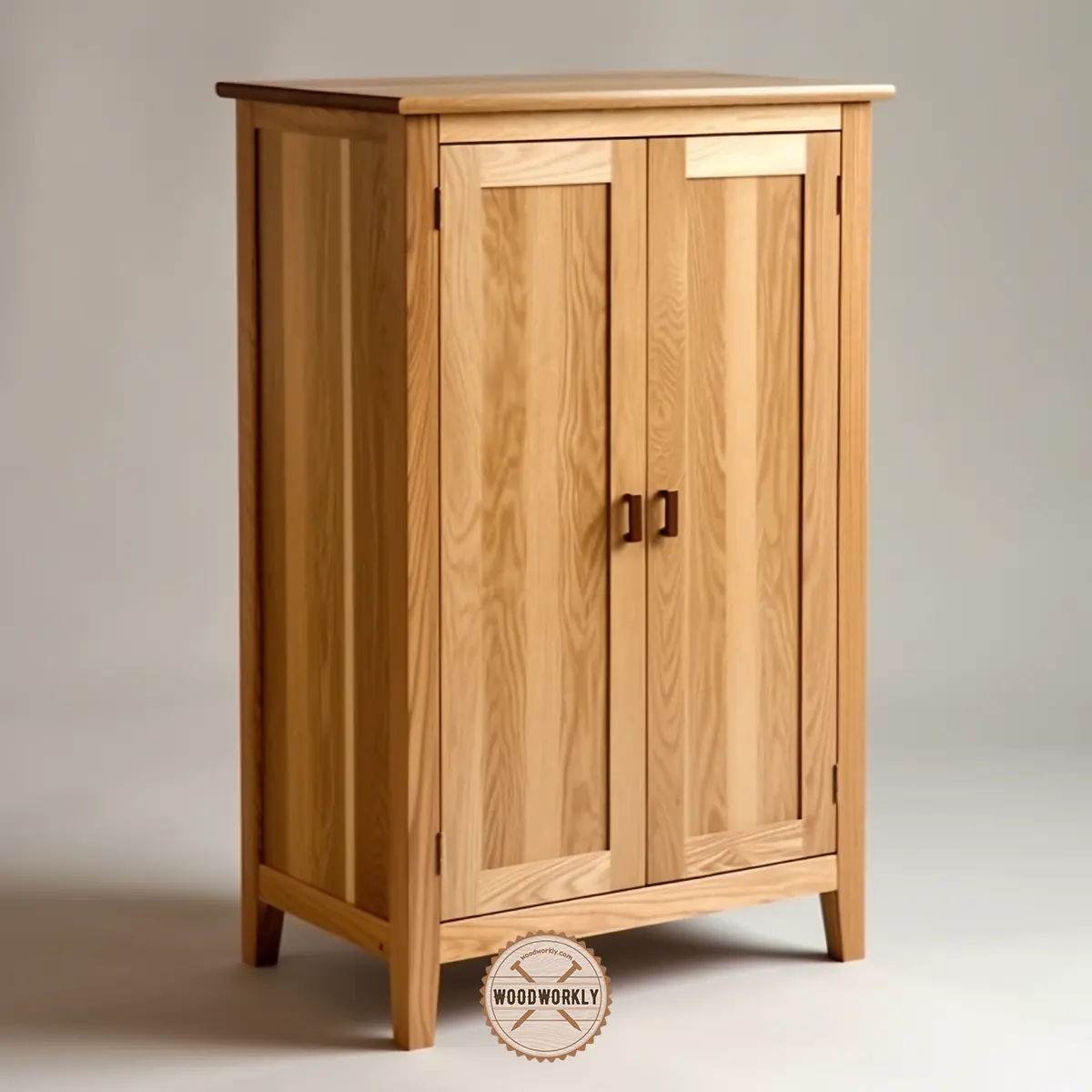
Ash Hardwood Flooring
Ash wood is a hard, dense, and incredibly strong wood with Janks hardness rating of 1,320 lbf (5,900 N). This makes Ash wood is ideal for flooring.
Ash wood has great resistant to scratches and dents as well. Because of these qualities, Ash wood is widely used for flooring.
Ash wood can easily handle foot traffic. The workability is also higher than other common hardwoods used for floorings, such as Maple and Hickory because of are relatively softer than those two.
Therefore, Ash wood is easy to cut and doesn’t tear up easily.
So, let’s have a look at the advantages and disadvantages you’ll get by using Ash hardwood for flooring.
Ash Hardwood Flooring Pros and Cons
Hereby I have listed some of the major benefits and drawbacks you’ll receive by using Ash hardwood flooring.
| Pros | Cons |
| Hardwood (High hardness value) | Need high maintenance |
| High Density | Less moth, beetle, and termite-proof |
| High Durability | Expensive |
| Stronger than many | Less availability to find wide planks for as wood flooring |
| Scratch and dent resistant | Burn faster (more flammable than most other woods) |
| Easily handle foot traffic | Not good for exterior flooring without proper finishing because Ash wood easily gets attacked by insects. |
| High workability (Easy to cut) | |
| Take stain and paint so well | |
| Beautiful light color and wood grain | |
| Can easily install in larger spaces because of high elasticity | |
| Because of having a more natural color, Ash wood flooring can easily hide dust and dirt |
As you can see, in terms of the pros and cons of Ash wood flooring, Ash wood is one of the best woods for this application.
With proper finishing, you can use Ash wood for both interior and exterior flooring purposes.
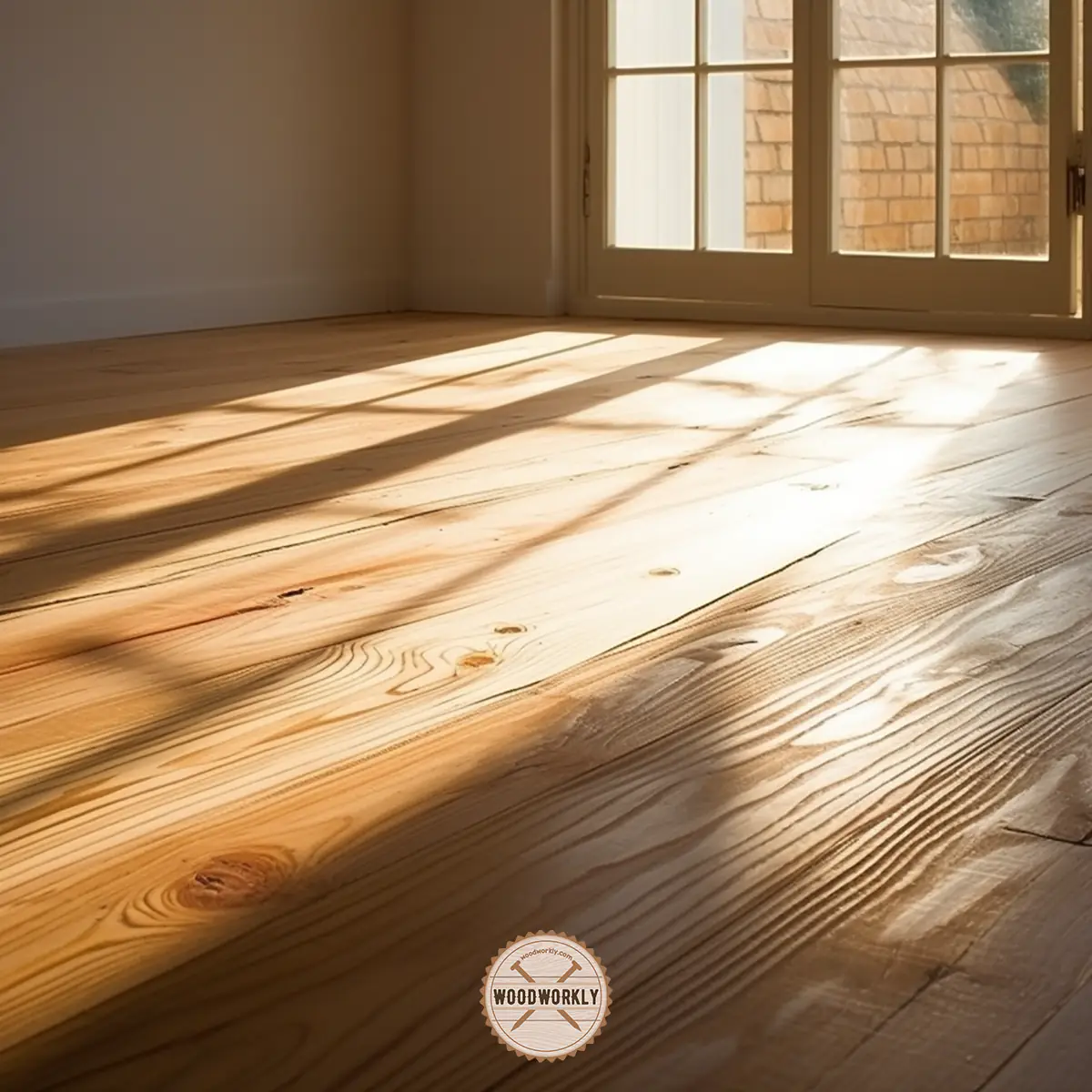
So, let’s compare the hardness of ash with some other popular wood types.
Is Ash Harder than Maple?
Ash wood is harder than soft Maple, but it is softer than hard Maple. According to the Janks hardness ratings,
| Wood Type | Hardness |
| Ash Wood | 1,320 lb. |
| Hard Maple | 1,450 lb. |
| Soft Maple | 950 lb. |
As you can see, if you’re comparing Ash wood with hard Maple wood, yes hard Maple is harder and stronger than Ash wood.
But with soft Maple, Ash wood clearly has higher strength with high hardness.
The reason for having higher hardness than Ash wood is because of the very tight grain structure of hard Maple.
It is less porous, and the diameter of fiber vessels of hard Maple is so much less than Ash wood.
Therefore, the number of fibers in a unit area of hard Maple is higher than Ash wood. This makes Maple harder and denser than Ash wood.
Is Ash Harder than Oak?
Ash wood is harder than red Oak and shows a similar value of hardness with White Oak.
Ash wood has a higher hardness rating than Oak wood according to the Janka hardness test values.
| Wood Type | Hardness |
| Ash Wood | 1,320 lb. |
| Red Oak | 1,290 lb. |
| White Oak | 1,360 lb. |
Both Ash wood and Oak are considered as one of the hardest woods on the planet with great strength and durability.
Therefore, comparing these two kinds of wood in terms of hardness is useless. According to their hardness, both are mostly the same.
Is Ash Harder than Hickory?
Hickory is harder and stronger than Ash wood. According to the Janka hardness values, Hickory is clearly a winner against Ash wood.
| Wood Type | Hardness |
| Ash Wood | 1,320 lb. |
| Hickory | 1,820 lb. |
If you’re searching harder, stronger, and denser wood than Ash wood for your next woodworking project, I can highly recommend Hickory not only because of its great hardness but also because of its good qualities which are applicable for any woodworking project.
That’s it, folks! Hope you’ve learned all you wanted to know about, Is Ash a hardwood?
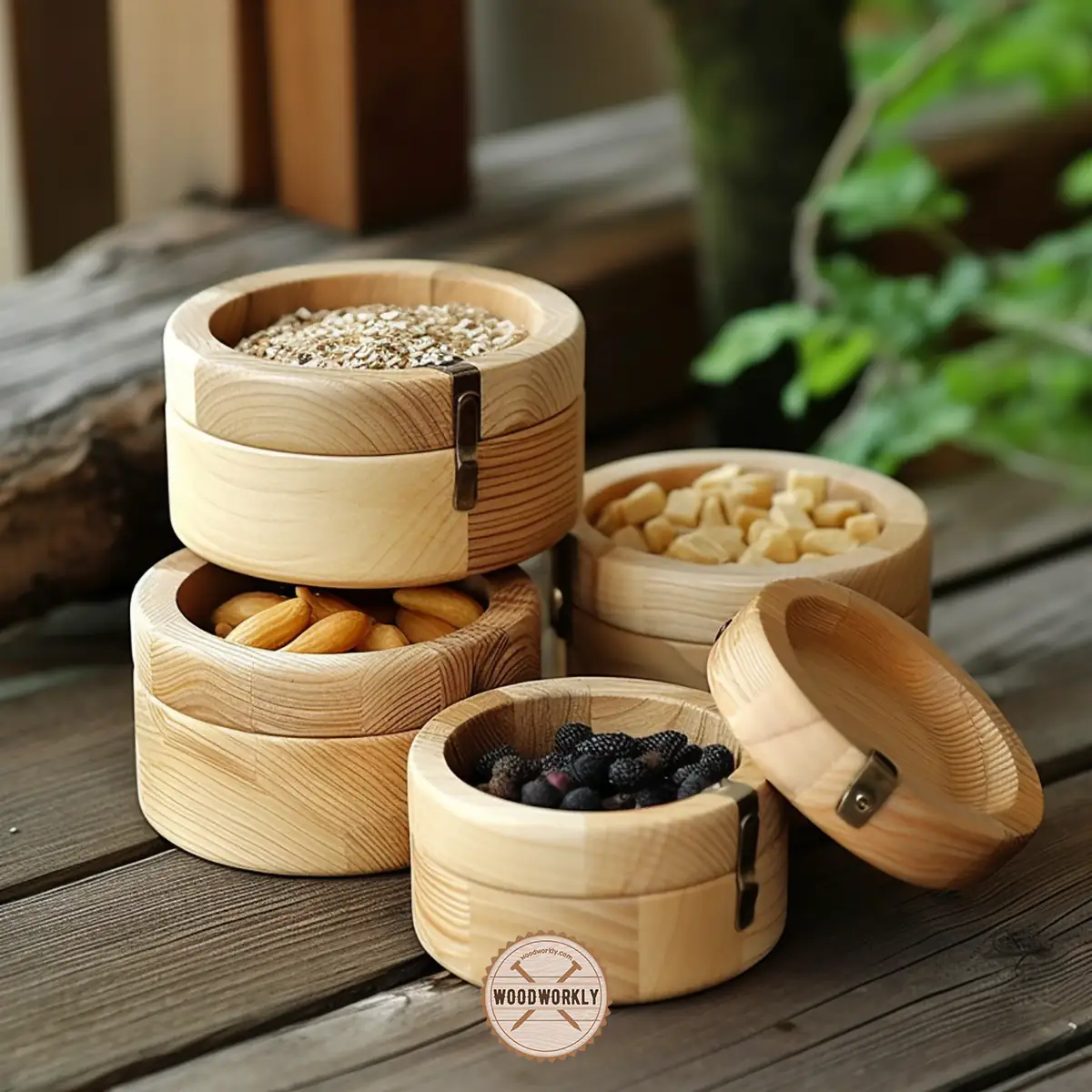
So, let’s answer some frequently asked questions.
FAQs
How Does Ash Wood Compare to Other Hardwoods?
In terms of durability and hardness, ash wood holds a competitive place, sitting right below maple and white oak but above red oak, walnut, and cherry on the Janka hardness scale.
How Can I Tell if My Furniture is Made of Ash Wood?
Distinguishing ash wood can be challenging as it closely resembles oak when stained. The best way is to purchase from a reputable seller or use scientific methods for accurate identification.
Is Ash Wood Suitable for Outdoor Furniture?
No, ash wood isn’t the best for outdoor use as it requires yearly maintenance and isn’t particularly rot-resistant. Other materials like recycled plastic lumber are better suited for outdoor conditions.
What Makes Ash Wood Unique?
Ash wood’s light color, straight grain, and ability to change hues over time make it unique. Its hardness also makes it a practical choice for a range of applications from furniture to sports equipment.
Did I cover all you wanted to know about: Is Ash A Hardwood?
In this article, we have deeply gone through the question is Ash a hardwood by considering how hard/dense Ash wood is.
Secondly, we have widely discussed the characteristics of Ash wood and the uses of Ash hardwood for various purposes.
Ash is a hardwood with Janka hardness rating of 1,320 lbf (5,900 N). Because of being hardwood, Ash wood is resistant to scratches and dents than softwoods. Ash hardwood produces high-quality products with great durability. The hard and dense cellular structures of Ash wood are strong and easy to maintain.
Ash wood has lots of great qualities. Such as strong, dense, and beautiful appealing wood.
So, I highly recommend Ash wood for any woodworking or woodcarving application.
Then we have talked about Ash hardwood flooring pros and cons and finally, we have answered the frequently asked questions about is Ash a hardwood.
However, Ash wood is a great choice for your next woodworking project. Hope you’ll enjoy the woodwork you make with Ash wood!